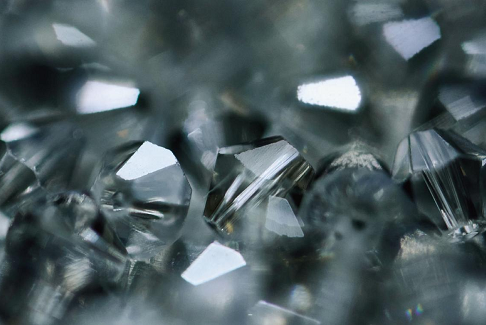In the world of effect pigments, the base substrate is not just a carrier—it's a defining element of how color, sparkle, and brilliance are ultimately perceived. When it comes to Diamond Interference Pearlescent Pigment, the choice between natural mica, synthetic mica (such as fluorphlogopite), and borosilicate glass flake significantly influences the final optical performance. Each substrate brings its own refractive index, clarity, and surface smoothness, which in turn affects the pigment’s ability to produce strong interference colors and high chroma effects. For manufacturers and formulators aiming to achieve a luxurious or high-visibility finish, understanding these differences is essential.
Mica-based diamond interference pigments have long been the industry standard due to their balance of cost-efficiency and ease of processing. However, natural mica carries certain limitations in terms of clarity and smoothness. These factors can cause a slight diffusion of light, which softens the interference effect. For applications that do not require razor-sharp sparkle—such as certain types of interior coatings or lower-cost plastic goods—mica substrates still deliver reliable aesthetic results. Yet when sharper, more intense reflectivity is the goal, alternatives become more attractive.

Enter synthetic mica, particularly fluorphlogopite, which is gaining traction in premium applications. Its extremely smooth and pure surface leads to a cleaner interference pattern and better control over particle size distribution. This results in brighter, purer hues and enhanced color travel. It also offers improved thermal and chemical resistance, making it well-suited for high-performance coatings and specialty plastics. For customers targeting a balance between brilliance and process stability, synthetic mica-based diamond effect pigments often represent a sweet spot.
Glass flake substrates, however, take the performance of Diamond Interference Pearlescent Pigments to a different level. With a much higher refractive index than mica, borosilicate glass produces extremely sharp light reflection and a deep, almost gem-like sparkle. These pigments are ideal for automotive topcoats, luxury packaging, and cosmetics where visual impact must be immediate and memorable. The transparency of glass allows for highly saturated colors and multilayer coatings that respond vividly to changing light angles. Though more expensive, the payoff in optical clarity and sparkle precision can be well worth the investment for brands seeking high-end differentiation.
Of course, choosing the right substrate also involves practical trade-offs beyond visual effects. For example, glass flake pigments are more fragile and may require gentler mixing processes to avoid particle breakage, while synthetic mica can offer improved consistency in automated production environments. Moreover, each substrate interacts differently with binder systems and dispersion methods, affecting not only color intensity but also application stability and shelf life. Our team works closely with clients to identify the best pigment grade based on both performance goals and formulation constraints.
As a manufacturer with deep experience in specialty pigment production, we understand that customers aren't just looking for a pigment—they're looking for a solution that fits their design, application, and production needs. Whether your project requires the intense brilliance of glass flake-based Diamond Interference Pearlescent Pigment or the cost-effective versatility of mica types, we offer a range of tailored options that bring visual excellence to the surface. Our pigment technologies are designed not only to meet aesthetic goals but also to perform reliably across demanding industrial processes.
Ultimately, the substrate you choose determines how far you can push the boundaries of color and light. Diamond Interference Pigments aren't just about shimmer—they're about engineered optical behavior that adds measurable value to your product. With substrate selection as a foundational step, we help our customers unlock the full potential of these advanced materials.

